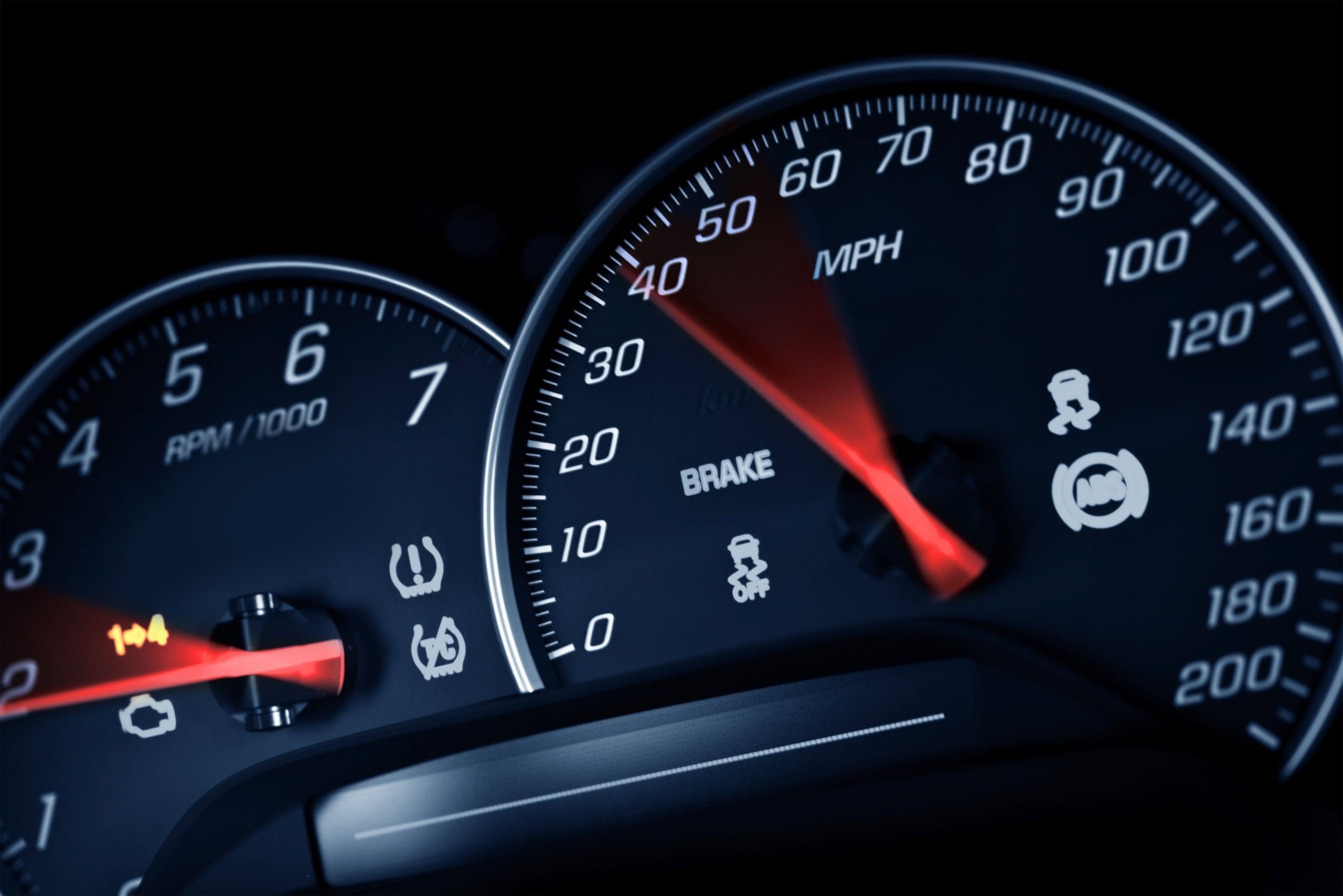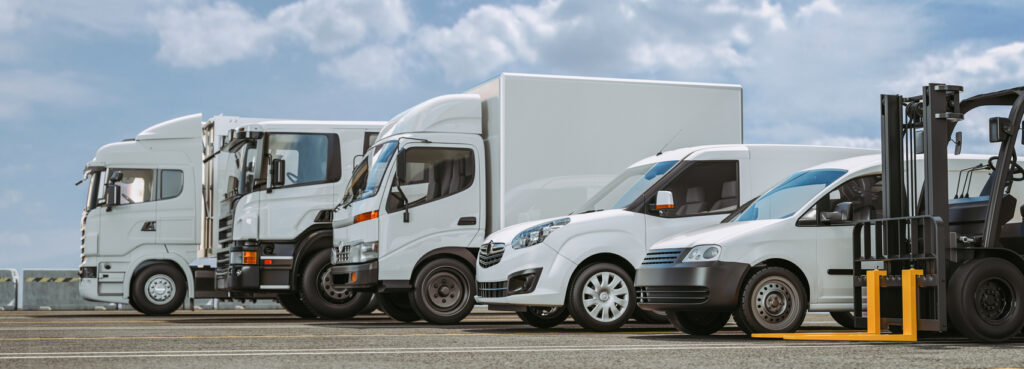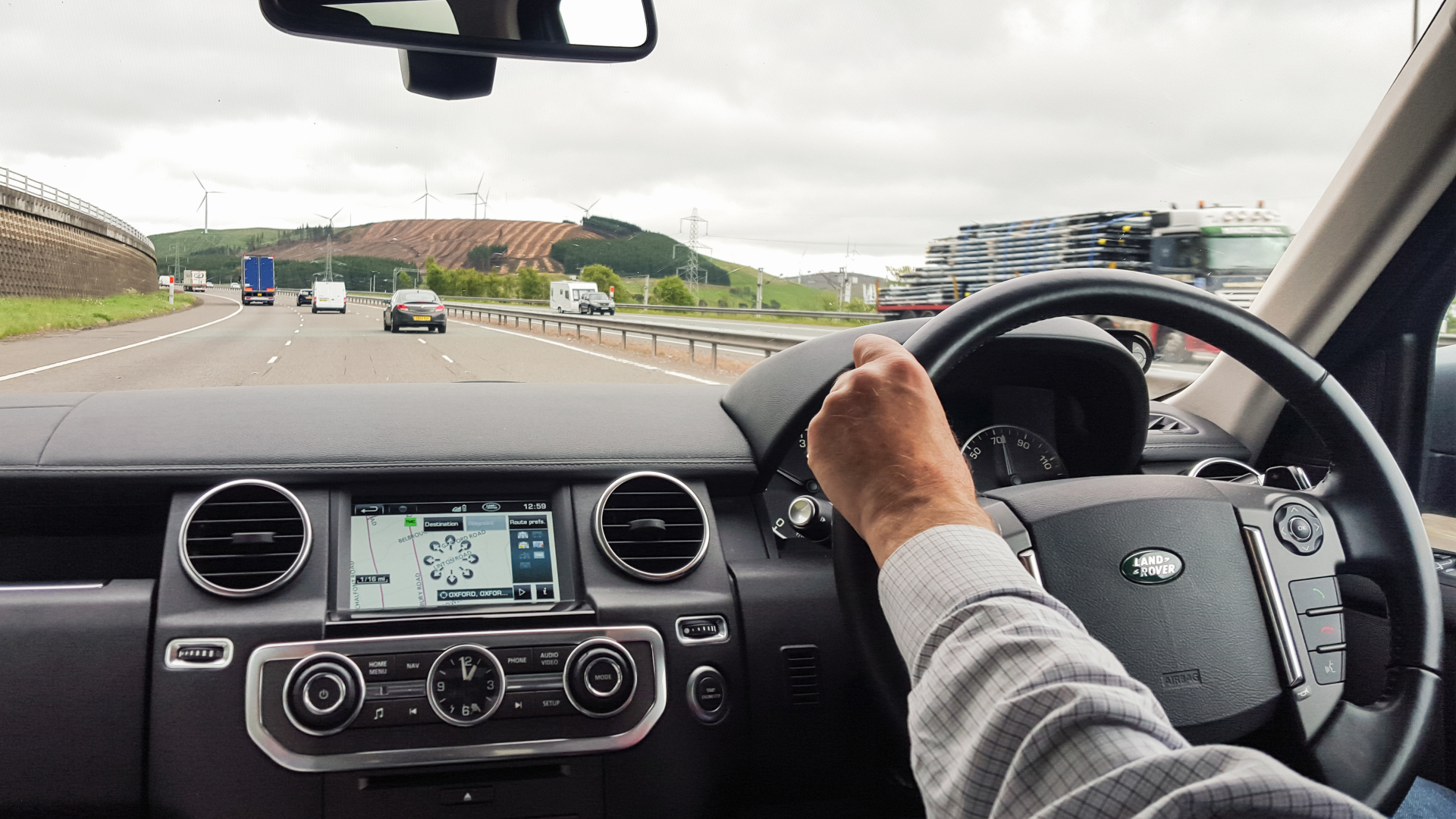Centralized vs vehicle-level control systems: Which is better?
Aug 22, 2025 Resolute Dynamics
The way vehicles make decisions is changing fast. We’re not just talking about turning on headlights or braking—today’s vehicles need to process road signs, detect obstacles, control speed, and even talk to other vehicles. How this control happens is a big deal. Do we let one central system make all the choices, or do we let each part of the vehicle decide on its own?
That’s where centralized vs vehicle-level control systems come in. Choosing the right setup can mean the difference between a smart, safe fleet and one that’s struggling to keep up.
Let’s explore both sides—and find out which one really works better for modern vehicle systems and fleet operations.
Short Answer:
Centralized control systems offer better integration and simpler software management, while vehicle-level control systems respond faster and provide more fault tolerance. The best approach depends on the fleet’s goals—centralized works well for big data analysis, while vehicle-level excels in real-time safety. A hybrid system often delivers the best of both.
What Are Vehicle Control Systems?

A vehicle control system is the brain and nervous system of a modern vehicle. It’s the technology responsible for making decisions about how a vehicle behaves—when to accelerate, brake, steer, shift gears, and even when to warn the driver about danger. It’s no longer just mechanical. Today’s control systems are powered by embedded electronics, software algorithms, sensors, and artificial intelligence (AI).
Let’s break it down clearly.
Core Components of Vehicle Control Systems
Understanding a control system means looking at the individual parts that keep everything running:
-
Sensors: These act like the vehicle’s senses. They detect speed, engine temperature, surrounding objects, road signs, lane lines, weather conditions, tire pressure, and even the driver’s eye movement.
Examples: IMU (Inertial Measurement Unit), LIDAR, Radar, Ultrasonic sensors, GPS. -
Electronic Control Units (ECUs): Think of these as tiny computers. They process input from sensors and send commands to actuators. Vehicles can have 70+ ECUs managing different systems—from brakes to infotainment.
-
Actuators: These parts physically carry out instructions, like turning the steering wheel slightly or adjusting the throttle.
-
CAN Bus (Controller Area Network): This is the communication system that lets different parts of the vehicle talk to each other. It’s how data moves between ECUs, sensors, and actuators.
How Vehicle Control Works (Step-by-Step)
Here’s how the whole system works together:
-
Sensing the environment: Sensors pick up real-time data about the vehicle and surroundings.
-
Processing data: Control units process this data using algorithms, AI, and predefined safety logic.
-
Making decisions: Based on this, the system decides—should the car brake, steer slightly left, or alert the driver?
-
Taking action: Commands are sent to the brakes, throttle, or steering via actuators.
-
Monitoring results: The system checks if the action worked and adjusts if needed.
This process happens within milliseconds, often faster than a human can react.
Types of Vehicle Control Systems
Vehicle control isn’t a single thing—it’s a network of specialized systems, including:
-
Powertrain Control System: Controls the engine and transmission.
-
Steering Control System: Manages steering angles and assists in lane-keeping.
-
Brake Control System: Includes ABS, ESC, and auto emergency braking (AEB).
-
Suspension Control System: Adjusts ride height and damping based on road conditions.
-
Driver Assistance Systems (ADAS): Enables features like adaptive cruise control, blind-spot detection, and collision warning.
All of these systems must work together flawlessly to ensure safety, comfort, fuel efficiency, and now even autonomy.
From Mechanical to Intelligent Control
Older vehicles relied on mechanical linkages—like cables and hydraulics. But in today’s cars, especially electric vehicles and autonomous fleets, the shift is toward “Drive-by-Wire” systems where computers control the vehicle entirely.
Modern control systems:
-
Learn over time using machine learning
-
Share real-time data via telematics
-
Predict risks using AI models
This intelligence is what makes autonomous driving, smart fleets, and predictive maintenance possible.
Why Control Systems Matter for Fleets and OEMs

If you manage a fleet or build vehicles, control systems affect everything:
-
Fuel efficiency: Smart acceleration and route optimization
-
Safety compliance: Automated enforcement of speed limits
-
Downtime reduction: Early detection of faults
-
Driver behavior monitoring: Alerts for harsh braking or distracted driving
For fleet managers, control systems aren’t just helpful—they’re mission-critical.
Understanding Centralized Control Systems
A centralized control system is a vehicle architecture where most (or all) of the decision-making happens in a single, high-performance unit—often called a central ECU (Electronic Control Unit), a Vehicle Central Computer, or in advanced designs, a domain controller. This system collects data from the entire vehicle, processes it in one location, and then sends out commands to the different vehicle subsystems like braking, steering, or acceleration.
Think of it as the central brain of the vehicle.
How Centralized Control Works
Here’s a simplified overview of the data flow:
-
Sensor Input: Cameras, radars, LIDAR, GPS tracking, and other vehicle sensors collect environmental and internal data.
-
Data Routing: All sensor data is sent to the central processing unit via the CAN bus or newer networks like Ethernet or FlexRay.
-
Data Processing: The central system uses complex algorithms, AI models, and sensor fusion techniques to analyze this data in real-time.
-
Decision Making: Based on this, the central unit decides how the vehicle should respond (e.g., slow down, steer, issue a warning).
-
Command Distribution: The central ECU sends out action signals to various actuators around the vehicle.
This architecture powers many of the functions in modern vehicles, especially those with advanced driver-assistance systems (ADAS) or transitioning to autonomous driving.
Key Features of Centralized Systems
-
Central Data Processing: One unit handles multiple tasks across domains (e.g., powertrain, safety, infotainment).
-
Sensor Fusion Optimization: Enables combining data from multiple sensors for better accuracy (e.g., merging radar + camera input for object detection).
-
Software-Defined Behavior: Updates can improve system performance remotely via OTA (Over-the-Air) software upgrades.
-
Easier Compliance: A centralized setup simplifies tracking, logging, and reporting for fleet compliance and safety regulations.
Benefits of Centralized Control
1. Better System Coordination
All subsystems talk to one main computer, so actions are synchronized. This improves:
-
Decision consistency
-
Safety responses
-
Ride quality
2. Simplified Software Management
Fewer ECUs mean fewer software modules to update. This makes fleet-wide updates faster and more secure.
3. Lower Long-Term Hardware Cost
While initially expensive, centralized architecture reduces wiring, weight, and duplicate ECUs—saving money at scale.
4. Advanced Analytics
With all vehicle data in one place, AI can perform deeper analysis for:
-
Predictive maintenance
-
Driver scoring
-
Fuel and route optimization
Challenges of Centralized Control
1. Latency Issues
Since data must travel to the center and back, there’s potential for communication lag, especially in fast scenarios like collision avoidance.
2. Single Point of Failure
If the central ECU crashes or is compromised (e.g., cyberattack, power surge), the entire vehicle could fail.
3. Scalability Bottlenecks
Adding new features might overload the system or require a hardware overhaul, which is costly.
4. Thermal and Power Demands
Central units require high computing power (e.g., NVIDIA Drive, Qualcomm Snapdragon Ride). These need proper cooling and energy management, especially in EVs. Real-World Examples
-
-
Tesla uses a highly centralized architecture where most systems are controlled by a few powerful domain controllers. Their approach simplifies software updates across millions of vehicles.
-
Volkswagen’s MEB platform also moves toward centralization, combining various domain functions into fewer high-performance computing units.
-
Mercedes-Benz MB.OS aims to centralize control in luxury vehicles, integrating infotainment, navigation, and ADAS into one unified system.
-
Real-World Examples
-
Tesla uses a highly centralized architecture where most systems are controlled by a few powerful domain controllers. Their approach simplifies software updates across millions of vehicles.
-
Volkswagen’s MEB platform also moves toward centralization, combining various domain functions into fewer high-performance computing units.
-
Mercedes-Benz MB.OS aims to centralize control in luxury vehicles, integrating infotainment, navigation, and ADAS into one unified system.
What Are Vehicle-Level (Decentralized) Control Systems?

A vehicle-level control system, also called distributed or decentralized control, means each component handles its own tasks. The brakes, engine, steering—all have their own processors and decision logic.
✔ Benefits of Vehicle-Level Control:
-
Faster reaction times: No need to wait for a central command. Everything happens locally.
-
Fault tolerance: If one part fails, others still work.
-
Scalability: Easier to add new features or modules without overloading a central brain.
✘ Limitations:
-
Data silos: Systems don’t always “talk” to each other well.
-
Complex setup: Requires robust software to coordinate between systems.
-
Inconsistency: If not synced well, different modules might act in conflict.
Comparative Analysis: Which Is Better for Fleet Safety & Efficiency?

Here’s a side-by-side look:
| Feature | Centralized Control | Vehicle-Level Control |
|---|---|---|
| Data Processing Speed | Moderate (cloud delay) | High (local edge response) |
| Fault Tolerance | Low (central failure risk) | High (module redundancy) |
| Scalability Across Fleets | High (central updates) | Medium (individual tuning) |
| Real-Time Adaptability | Lower | Higher |
| Integration with AI & Telematics | Strong | Moderate |
| Cost of Implementation | Higher (initial setup) | Varies by design |
| Cybersecurity Exposure | Higher (cloud threats) | Lower (isolated systems) |
No one-size-fits-all. Urban delivery fleets might favor a decentralized approach for quick responses, while large fleets collecting tons of data might benefit more from centralized analysis.
The Resolute Dynamics Perspective
A smart approach doesn’t always mean choosing one side. At Resolute Dynamics, our “Capture – Connect – Control” framework blends the best of both:
-
Capture: Our AI vision systems detect driver behavior, signs, and obstacles on the edge—in the vehicle itself.
-
Connect: Telematics and cloud-based analytics provide a centralized view of vehicle health, driver safety, and route data.
Our telematics-driven data integration and connectivity framework strengthens this layer—merging real-time operational data with predictive analytics to enhance fleet visibility, reporting, and proactive compliance management across regions. -
Control: Intelligent systems within the vehicle take immediate action—like slowing down for a curve—without waiting for a command from HQ.
These on-board responses are powered by our AI-based adaptive vehicle control and automation systems, which continuously learn from live conditions to optimize speed, torque, and braking while ensuring precise, regulation-compliant operation.
By using a hybrid model, we help over 200,000 vehicles stay compliant, safe, and ahead of the curve. This combination gives fleets the agility of decentralized systems and the insight of centralized intelligence.
Entities Involved: Road sign recognition, real-time telemetry, connected fleet systems, AI-powered ECUs
Future Outlook: Convergence or Coexistence?
The future won’t be black or white. We’ll likely see:
-
Zonal architectures: Grouping systems into zones (like “front zone” or “driver zone”) with local processing.
-
Software-defined vehicles: Where the same car can change behavior through software, not hardware.
-
Cloud-edge fusion: A mix where cloud systems analyze long-term patterns, and edge systems handle real-time safety.
New standards like Vehicle-to-Everything (V2X) and over-the-air (OTA) updates will push this further.
Manufacturers and fleet managers should prepare for converged architectures that offer both speed and smarts.
FAQs
What’s the key difference between centralized and vehicle-level control?
Centralized systems process data in one place; vehicle-level systems let each part think for itself.
Which system is better for autonomous vehicles?
Autonomous cars often use a mix—central AI for planning and local control for split-second actions.
Can fleets use both systems?
Yes, hybrid systems are becoming the industry standard, offering the best mix of safety, flexibility, and control.
Does latency really matter in fleet safety?
Yes. Even a half-second delay in braking or turning can cause major risks at highway speeds.
Conclusion
There’s no single winner in the battle between centralized and vehicle-level control systems. Each comes with its strengths and trade-offs. The smart move is often a hybrid architecture—letting real-time actions happen locally while using centralized systems to learn, adapt, and improve long-term strategy.
Whether you’re running logistics in downtown Dubai or managing autonomous fleets in Asia, the right control system could be your best safety feature. And as the future unfolds, the line between “central” and “local” will continue to blur—pushing us toward safer, smarter roads for everyone.